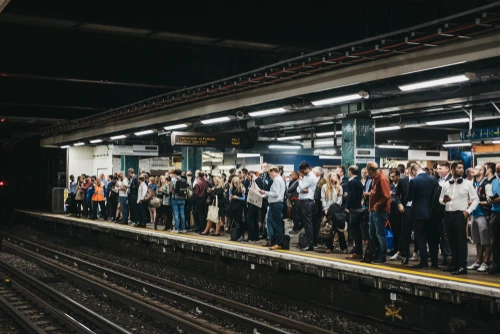
Love it or hate it – and if you’re reading an article on this website, let’s be honest, you probably love it – the tube is enormously popular.

Whether it’s the sweaty sardine-tinned masses of the morning northern line crush, or the surprisingly tragic dribbles on the 3am Victoria line night tube, the London Underground, its trains and its stations are put to good use; well, most of them.
But which are the busiest?
The easy, simple answer is King’s Cross.
According to 2021 figures, King’s Cross registered 36.73 million entries and exits in 2021 (the most recent year for which data, at the time of writing, is available). This isn’t surprising – it’s a huge railway terminus and one of the busiest national rail station by passenger numbers in the country.
Also of note, however, is the huge dip in passenger numbers during the pandemic, and their failure to fully bounce back during subsequent lockdowns. So perhaps 2022 figures will shine a better light. But this is what we have for now.
Intrinsically, rail termini are much more likely to come top in passenger numbers. They’re the entry point for millions of people coming into London, both those who commute in for work and those who come from further afield for day trips and extended stays.
So it’s not surprising that several of the top ten busiest tube stations are also national rail termini: as well as King’s Cross St. Pancras, there’s Victoria (2nd), London Bridge (4th), Waterloo (5th), Liverpool Street (7th) and Paddington (8th).
That accounts for almost all of London’s main rail terminals, in fact. The only ones missing are either tiny (Marylebone, Cannon Street, Charing Cross), don’t have a tube station (Fenchurch Street), or effectively have two, just wrecking the numbers (Euston).
But aside from the national rail termini, which are the busiest stations?
Oxford Circus is in third place overall in terms of the busiest tube station, while Bank and Monument (measured together) come in 10th. Then there are two stations outside central London: the vast transport hub of Stratford at 6th, and Canary Wharf is in 9th.
The complete top ten, with number of visits, looks like this:
- King’s Cross St Pancras – 36.73 million
- Victoria – 33.48 million
- Oxford Circus – 32.86 million
- Waterloo – 29.87 million
- London Bridge – 30.86 million
- Stratford – 29.10 million
- Liverpool Street – 26.60 million
- Paddington – 20.44 million
- Bank & Monument – 17.66 million
- Canary Wharf – 18.29 million
If you’re after particularly niche trivia, the busiest station that serves only one line, and has no national rail connection, is North Greenwich.
If you’re being really pedantic and counting the cable car as an interchange (which you shouldn’t), then the answer to that particular niche question becomes Camden Town on the Northern Line.
[Read more: Why we can’t speed up escalators to increase capacity]Note: There’s a sleight of hand with all these figures, of course: “entries and exits” is an imperfect measure of busyness. It’s theoretically possible that a major interchange station might have more people pass through, even if relatively few of them cross the gateline.
For the moment though these are the best figures we’ve got so, until someone comes up with a way of counting the number of people changing trains at Bank of a morning, this is our story and we’re sticking to it.






